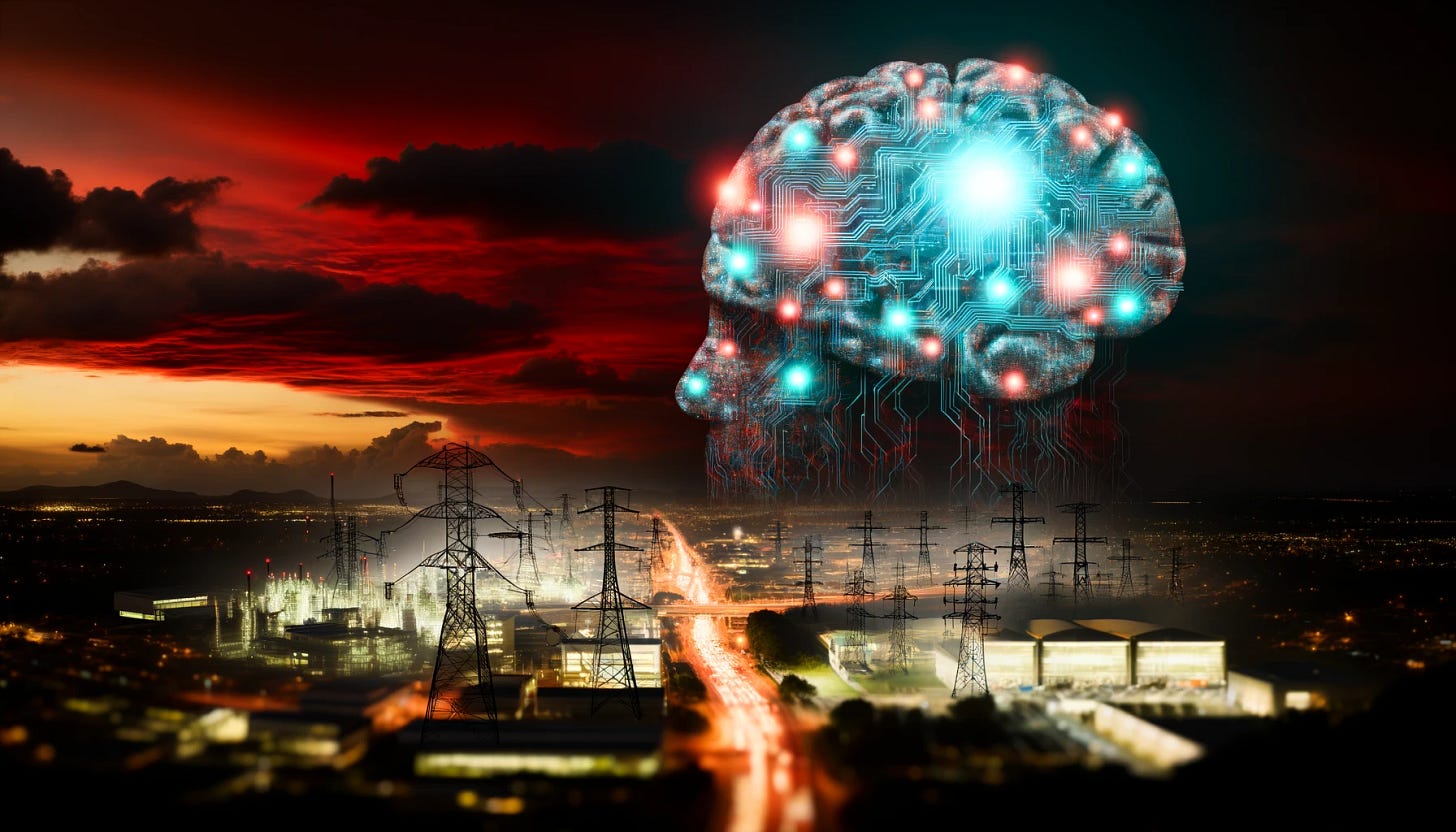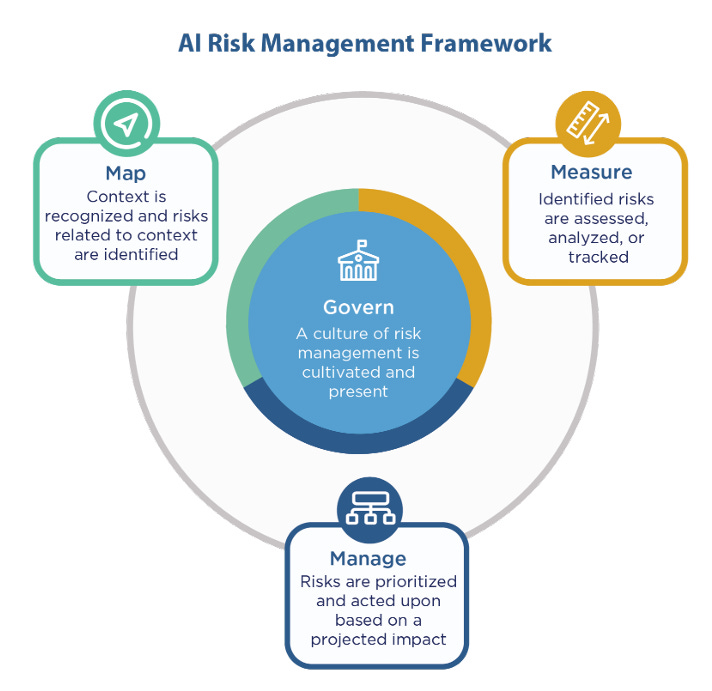On April 26th, 2024, the Department of Homeland Security released a 28-page document outlining AI security guidelines for critical infrastructure owners.
While it is a step in the right direction, the whitepaper is vague, dry, and unhelpful.
In this article, I will summarize the paper to save you from reading it, give my thoughts on how it could be improved, and discuss how we can guard critical infrastructure from AI threats in the future.
Contents
DHS Whitepaper - Summary
AI Risks to Critical Infrastructure
Guidelines For Critical Infrastructure Owners
The Disconnect…
How Could It Be Improved?
How Can We REALLY Guard Our Critical Infrastructure?
Final Thoughts - The Future
DHS Whitepaper - Summary
Skim through this section if risk isn’t your thing…
On October 30, 2023, Joe Biden signed Executive Order 14110 - Safe, Secure, and Trustworthy Development and Use of Artifical Intelligence. This order mandated the Secretary of Homeland Security to assess the risks of AI in critical infrastructure, using the NIST AI Risk Management Framework.
AI Risks to Critical Infrastructure
The Cybersecurity and Infrastructure Security Agency (CISA) considered three categories of AI system-level risk when looking at critical infrastructure:
Attacks Using AI - Leveraging AI to facilitate harm, e.g. AI-enabled social engineering
Attacks Targeting AI Systems - Targeted attacks on AI systems supporting critical infrastructure, e.g. manipulating AI algorithms
Failures in AI Design and Implementation - Poorly designed models causing critical infrastructure to fail
Guidelines For Critical Infrastructure Owners
Infrastructure owners and operators are advised to apply the NIST AI Risk Management Framework, tailored to critical infrastructure:
Govern
Establish an organizational culture of AI risk management:
Establish transparency in AI system use
Detail plans for cyber risk management
Establish roles and responsibilities with AI vendors
Map
Understand your individual AI use context and risk profile:
Establish which AI systems in critical infrastructure operations should be subject to human supervision
Review AI vendor supply chains for security and safety risks
Gain and maintain awareness of new failure states
Measure
Develop systems to assess, analyze, and track AI risks:
Continuously test AI systems for errors or vulnerabilities
Build AI systems with resiliency in mind
Evaluate AI vendors and AI vendor systems
Manage
Prioritize and act upon AI risks to safety and security:
Monitor AI systems’ inputs and outputs
Prioritize identified AI safety and security risks
Implement new or strengthened mitigation strategies
The Disconnect…
Are you still awake?
I found this whitepaper difficult to read. The piece lacks specific action steps, and several “recommendations” seem incredibly generic.
Let me give you an example:
Apply mitigations prior to deployment of an AI vendor’s systems to manage identified safety and security risks and to address existing vulnerabilities, where possible.
“Apply mitigations”. What mitigations can we apply? As of writing, every major Large Language Model is vulnerable to prompt injection, leading to devastating attack chains if the model can also read public internet data.
While the whitepaper uses big words and sophisticated phrases, the advice seems very disconnected from the attacks we are seeing today (Input manipulation, training data poisoning, model inversion as identified by OWASP). A lack of awareness around specific attack vectors means the appropriate defenses may not be applied by policy owners.
How Could It Be Improved?
Security guidelines for infrastructure owners are notorious for focussing on risk management frameworks as opposed to real attacks. This is compounded by the fact that AI is so new - many exploits are not properly documented yet.
Below are some tips as to how this could be revised:
Make the document more concise(!) - there are too many similar points that don’t provide value
Make the document more targeted - it should consider specific features of critical infrastructure, such as their frequent reliance on legacy systems
Consult a greater number of technical leaders in the AI space - the whitepaper was clearly made by government risk officials. This works for other industries, but in a rapidly changing space like AI Security, technical experts should be consulted about the latest attacks.
How Can We REALLY Guard Our Critical Infrastructure?
It is too soon to integrate AI into critical infrastructure. Large language models have showcased the sheer number of security issues inherent to the AI models of today. Putting a volatile new technology into systems society depends on is a recipe for disaster.
The uncomfortable reality is that policymakers must implement regulations that severely restrict AI in high-risk industries such as critical infrastructure. These regulations need to be coauthored by technical experts in the AI Security field.
Final Thoughts - The Future
In summary, the DHS document shows society’s lack of preparedness for AI attacks. Over the next 5 years, I predict we will see several nation-state attacks on AI solutions embedded into critical infrastructure, leading to devastating impact. When this happens, perhaps the Department of Homeland Security will take AI Security more seriously.
If this article interests you, check out my piece on indirect prompt injection below. Thanks for reading.
Indirect Prompt Injection - The Biggest Challenge Facing AI
Since ChatGPT was released in November 2022, big tech has been racing to integrate LLM technology into everything. Music, YouTube videos, and hotel bookings are just a few examples. But as of writing, any LLM which can read data from external sources is inherently insecure. In this article, we will take a deep dive into indirect prompt injection attacks,…

















